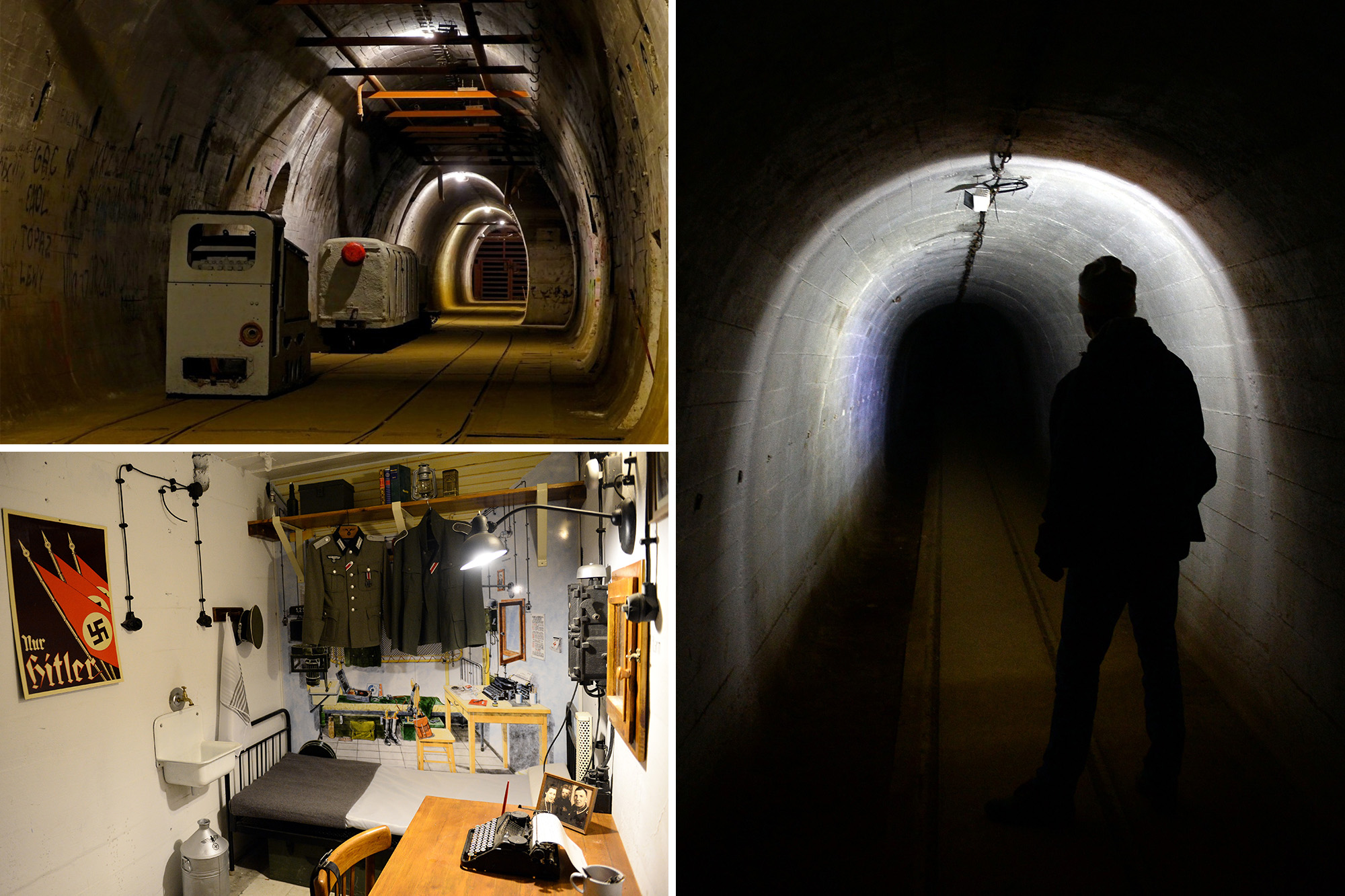World
Poland’s Nazi-Era Tunnels Transformed into Dark Tourism Museum

A nearly 20-mile network of underground tunnels and facilities from Nazi Germany has been transformed into a museum in Poland, allowing visitors to explore a dark chapter in history. The site, known as Festungsfront Oder-Warthe-Bogen or the Ostwall, is located near the small village of Pniewo and was abandoned in 1945. Now part of the Międzyrzecz Fortified Region Museum, the tunnels serve as a dark tourism destination, showcasing the remnants of a military complex that was never completed.
Mikolaj Wiktorowski, a guide at the museum, explained that the tunnels were initially designed for long-term habitation by soldiers, with facilities aimed at making life underground more comfortable. The museum, which opened in 2011, has recreated various sections of the tunnels to illustrate the daily lives of members of the Third Reich, featuring mannequins in uniform positioned in administrative rooms, sleeping quarters, and restrooms.
Historical Significance and Construction
The construction of the Ostwall began before the outbreak of World War II, as Adolf Hitler aimed to fortify Germany’s eastern frontier against Poland and the Soviet Union. The original plans envisioned a structure stretching 50 miles, with work projected to continue until 1951. However, by 1938, Germany redirected its focus towards France, leading to a halt in the Ostwall’s construction. Following the invasion of Poland in 1939, the ambitious project was abandoned.
Despite its incomplete status, the Ostwall is recognized as one of the most advanced fortifications of its time, with its central section capable of accommodating tens of thousands of soldiers. The tunnels remained hidden from public view for decades until their recent transformation into a museum.
Modern-Day Exploration and Cultural Impact
In the 1980s and 1990s, the abandoned tunnels gained a new life as a venue for raves and weddings, attracting a counter-cultural group known as the Bunker People. Their presence left a lasting mark, with graffiti covering the walls of the tunnels. Wiktorowski remarked, “The graffiti are the soul of this place. Without them, we would just have bare, lifeless walls.”
Today, the Międzyrzecz Fortified Region Museum not only serves as a historical site but also as a poignant reminder of the past, drawing visitors who seek to understand the complexities of history. As tourism continues to evolve, the tunnels offer a unique glimpse into a period marked by conflict and resilience, ensuring that the lessons of the past remain accessible to future generations.
-

 Politics2 weeks ago
Politics2 weeks agoDallin H. Oaks Assumes Leadership of Latter-day Saints Church
-

 Sports2 weeks ago
Sports2 weeks agoSteve Kerr Supports Jonathan Kuminga After Ejection in Preseason Game
-

 Business2 weeks ago
Business2 weeks agoTyler Technologies Set to Reveal Q3 2025 Earnings on October 22
-

 Lifestyle2 weeks ago
Lifestyle2 weeks agoDua Lipa Celebrates Passing GCSE Spanish During World Tour
-

 World2 weeks ago
World2 weeks agoD’Angelo, Iconic R&B Singer, Dies at 51 After Cancer Battle
-

 Health2 weeks ago
Health2 weeks agoRichard Feldman Urges Ban on Menthol in Cigarettes and Vapes
-

 Health2 weeks ago
Health2 weeks agoCommunity Unites for Seventh Annual Mental Health Awareness Walk
-

 Entertainment2 weeks ago
Entertainment2 weeks agoZoe Saldana Advocates for James Cameron’s Avatar Documentary
-

 Science2 weeks ago
Science2 weeks agoChicago’s Viral ‘Rat Hole’ Likely Created by Squirrel, Study Reveals
-

 Lifestyle2 weeks ago
Lifestyle2 weeks agoKelsea Ballerini Launches ‘Burn the Baggage’ Candle with Ranger Station
-

 Business2 weeks ago
Business2 weeks agoMLB Qualifying Offer Jumps to $22.02 Million for 2024
-

 Business2 weeks ago
Business2 weeks agoMega Millions Jackpot Reaches $600 Million Ahead of Drawings









